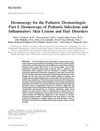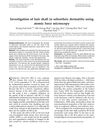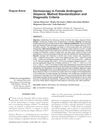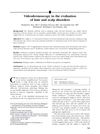The Value of Trichoscopy in the Differential Diagnosis of Scalp Lesions in Pemphigus Vulgaris and Pemphigus Foliaceus
November 2014
in “
Anais Brasileiros de Dermatologia
”

TLDR Trichoscopy helps tell apart scalp lesions in pemphigus vulgaris and pemphigus foliaceus and is useful for choosing biopsy locations.
The study, supported by a research grant from the National Science Centre in Poland, investigated the effectiveness of trichoscopy in distinguishing between pemphigus vulgaris (PV) and pemphigus foliaceus (PF) in scalp lesions. It involved 19 patients (9 with PV and 10 with PF) whose diagnoses were confirmed by histopathology. Trichoscopy revealed that extravasations were present in 94.7% of cases, yellow hemorrhagic crusts in 57.9%, and white polygonal structures exclusively in PF (60%). Vascular abnormalities, particularly linear serpentine vessels, were more common in PV (77.8%) than in PF (30%) and were associated with a severe disease course. The study introduced the "fried egg sign," a feature specific to pemphigus, and found that yellow dots with a whitish halo were more frequent in PV (77.8%) than in PF (40%). The study concluded that trichoscopy is a useful supplementary diagnostic tool for pemphigus, especially for selecting biopsy sites, although immunological examinations remain the gold standard for diagnosis.













